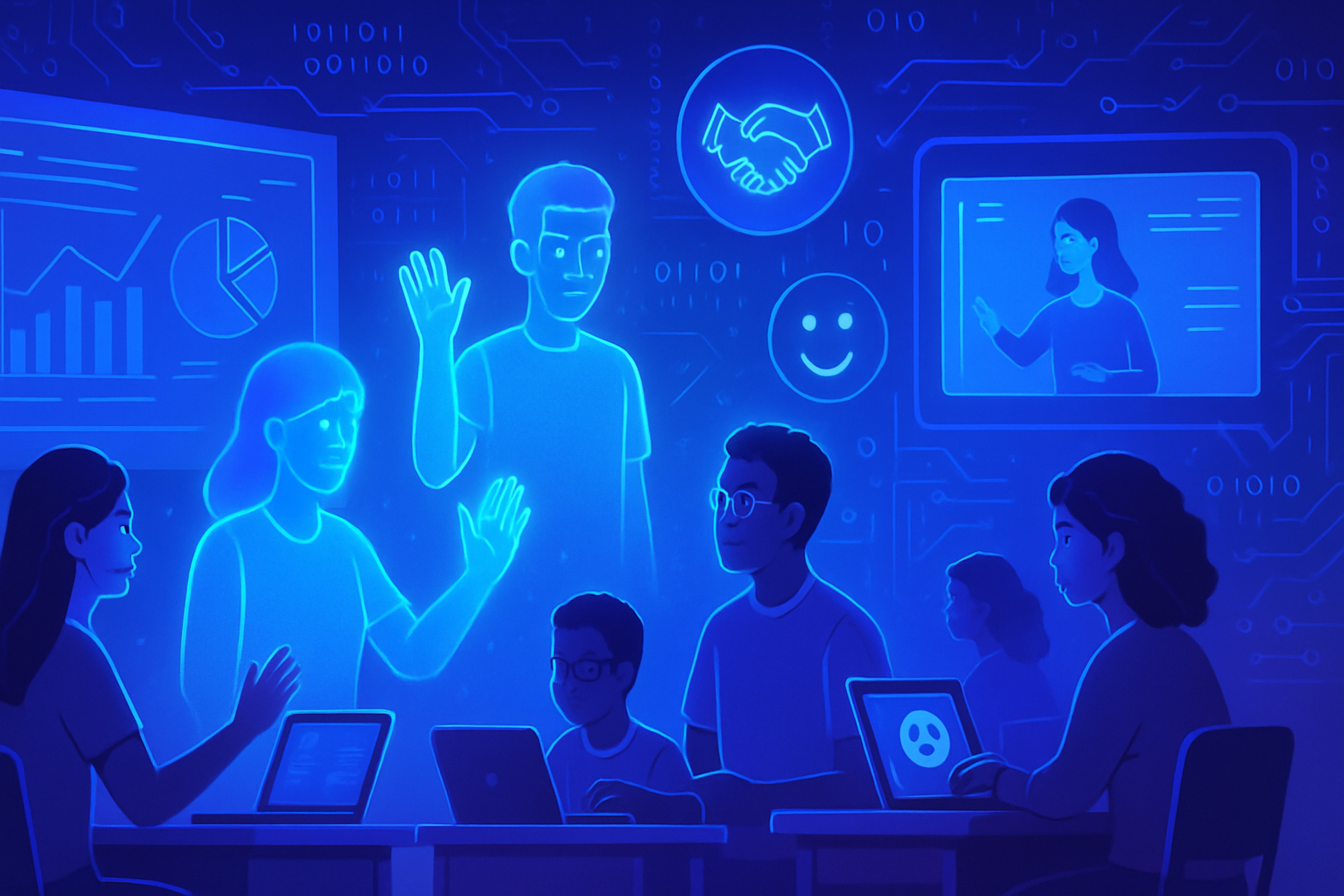Reinventing online learning requires uniting the spheres of technology, education, and human connections. The dynamics between these elements help shape meaningful and engaging learning experiences that are tailored to contemporary needs. The observation becomes apparent: traditional education stagnates in the face of the changing demands of modern society.
Digital tools, while effective, must become vectors of human connection to stimulate interest and curiosity. The search for authentic social interactions proves essential in a virtual setting that is often too isolated. By integrating these dimensions, it becomes possible to enhance the effectiveness of learning platforms and foster an interactive and inclusive environment.
Integration of Technology in Education
The convergence of technology and education is transforming learning, enabling new, more accessible and flexible educational approaches. This dynamic is based on the emergence of digital tools that facilitate interaction and engagement among learners. Online learning platforms, for example, exploit sophisticated algorithms to personalize learning experiences while taking into account the individual needs of students.
Role of Social Interactions
Social interactions are a fundamental element in the learning process. Researchers, like Caitlin Morris, examine the value of human exchanges within digital learning environments. She notes that human interaction generates an intrinsic curiosity and motivation that are often absent in one-sided learning models.
Impact of Community on Learning
Learning communities, whether online or in person, encourage a setting where students share ideas, help each other, and exchange experiences. Morris emphasizes that social engagement through collective projects or workshops enriches learning and sparks a desire for discovery. An increased community involvement also promotes better retention of knowledge.
Technology for an Immersive Experience
The growing use of immersive technologies, such as augmented and virtual reality, is changing the way learners interact with content. These tools enable a *multisensory learning experience*, offering maximum immersion that facilitates the understanding of complex concepts. Artistic installations, such as those arising from collaborations between technicians and artists, demonstrate the potential of blending creativity and technology.
Designing Adaptive Learning Platforms
Caitlin Morris is working on prototypes that combine AI-supported behavioral analysis and human assessments. This learning framework aims to capture social dynamics while considering learners’ personal feelings. By achieving a balance, these tools could significantly enhance online learning. There is an emphasis on the necessity to balance automation and human connection, as the user-platform relationship stimulates engagement.
Towards an Evolving Education
The challenges posed by integrating artificial intelligence are numerous. How can we reconcile a physical and virtual learning space? This question arises as education rapidly evolves in the face of technological innovations. Educational communities must adapt to these new realities while preserving the foundations of collaborative learning.
Future Opportunities
Morris envisions a future where communities benefit from advancements in artificial intelligence to enhance learning. As tools evolve, it becomes essential to maintain tangible human contact. The ability to navigate between various learning formats and embrace innovation will determine the future of education while upholding the fundamental values that promote a healthy and dynamic learning environment.
Frequently Asked Questions
How can technology foster human interactions in online learning?
Technology allows for the creation of interconnected platforms where learners can interact, share experiences, and collaborate on projects, thus enriching their learning.
What technological tools are most effective in enhancing student engagement in an online learning environment?
Tools such as discussion forums, video conferencing applications, and collaborative platforms (like Google Docs) encourage active and participatory engagement from students.
How can we measure the impact of social interactions on the motivation of online learners?
The impact can be measured through satisfaction surveys, analysis of behavioral data, and qualitative studies on students’ learning experiences.
What challenges need to be overcome to effectively integrate technology in education while maintaining a strong human connection?
Challenges include resistance to change, the need for training for teachers and students, and the necessity to design learning experiences that foster personal connection.
How can research on social learning and technology influence the design of digital educational platforms?
Research helps identify the key elements of social interaction that should be integrated into educational platforms to promote collaborative and motivating learning.
How are project-based learning approaches beneficial in a digital context?
Project-based approaches encourage learner autonomy, stimulate creativity, and allow the development of transversal skills while fostering human interactions.
How can artificial intelligence enrich human relationships in online learning?
Artificial intelligence can personalize learning paths, suggest connections between learners based on their interests, and facilitate virtual mentoring, thereby deepening human ties.
What advice would you give for creating an online learning environment that combines technology and human connection?
Encouraging open communication, using collaborative tools, promoting teamwork, and including moments of sharing and social reflection are essential keys to success.






